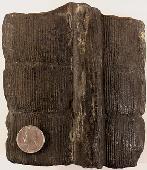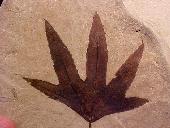|
 See More Images See More Images

Metasequoia occidentalis
© 2002 Audrey Aronowsky, University of California Museum of Paleontology

Calamites
© 2003 Thomas Kammer

Macginitiea wyomingensis
© 2002 The Virtual Fossil Museum
|
What are Plants? The Plantae, or plants, are one of the most abundant and diverse groups of organisms on Earth, with more than 250,000 species known. Plants have a rigid cell wall around each cell and produce their own food by capturing light energy in pigments like chlorophyll. They convert this energy into sugar, starch, and other foods that plants need to survive. Some fossils that appear to be from plants date back to the Ordovician, but the first unquestioned occurrences of plant fossils are from the Late Silurian.
Note: Although some green algae are closely related to plants, they differ in aspects of their morphology, lifecycle, and habitat, and they are discussed in Protists. First known fossil occurrence: Ordovician. Last known fossil occurrence: Quaternary. This group has living relatives. |
Fossils through time:
Choose a time period to see what life was like:
|
|